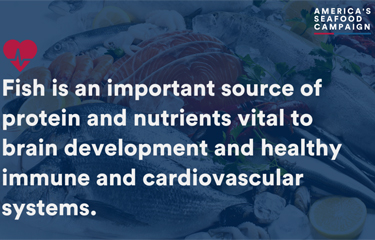The National Seafood Council Task Force said at a 14 March panel at the 2022 Seafood Expo North America in Boston, Massachusetts, U.S.A. that it is requesting USD 25 million (EUR 22.5 million) in funding to support the creation of marketing body for U.S. seafood.
The National Seafood Council Task Force is an industry-led effort supporting Seafood Nutrition Partnership (SNP) with its efforts to promote seafood as a healthy food source.
“We risk losing seafood consumers if we are not unified in our voice and telling our truth and celebrating all that seafood has to offer,” Jason Driskill, vice president of the seafood division for Texas-based retailer H-E-B and a panelist at the event, said. “We are united in this critical mission to support a healthier America.”
Task force members said at the meeting they are pushing to secure USD 25 million per year for five years in federal funds to be used to promote seafood. But to get there, they need industry signatures for the cause.
“Other commodity campaigns like milk, beef, eggs, avocados have millions a year to market their product,” said Linda Lai Cornish, president of the Seafood Nutrition Partnership and host of the conference session. “Avocado [consumption has] gone from one pound per person per year to eight pounds [annually].”
Although average domestic seafood consumption hit a record high of 19.2 pounds per person per year in 2019 — and Datassential research shows an increased interest in seafood consumption for the health benefits since the beginning of the coronavirus pandemic in 2020 — that number is still paltry in comparison to other animal proteins, Central Seaway (Censea) COO Joe Rosenberg said.
“Americans right now are consuming about 97 pounds of poultry per capita per year and 59 pounds of beef,” Rosenberg said.
The mission of the national seafood marketing campaign would be to increase seafood consumption by focusing on its health benefits, which Cornish pointed out is something all stakeholders can agree on without causing strife among different user-groups.
“We need to focus on the consumer who is looking for protein that is healthy for them and can suit their needs to have a climate friendly diet,” Cornish said. “Seafood fulfills those.”
One critical factor is updating scientific data with new information about seafood to counteract lingering misinformation about the safety of seafood consumption, specifically during pregnancy and in early childhood, according to Tom Brenna, chairman of the Seafood Nutrition Partnership Scientific and Nutrition Advisory Council and a professor at University of Texas-Austin, where he studies infant neurological development.
“When SNP researchers – joined by other researchers – looked at the relationship between seafood consumption and pregnancy and neurocognitive development, we see almost nothing but positive effects,” Brenna said.
In fact, seafood is “one of the few foods that delivers the kind of omega-3s that our brain is made of,” Brenna said. “Consumption sees positive benefits to 10 times the consumption of what we see in the [U.S.].”
The initiative is a win for the entire industry because the increase of seafood sales and consumption benefits all stakeholders, Jim Motos, senior vice president of the Consumer Brands Division of Rich Products Corp., said.
“It's not going to make you larger or gain a part of the pie,” Motos said. “But your piece of the pie is going to grow because consumption is going to increase.”
Leann Bosarge, head of new business development and project management at Pascagoula, Mississippi-based Bosarge Boats, said the broad-based approach provided by the task force is a significant opportunity to smaller businesses and independent fishermen, who rarely have the resources to tap into a national campaign.
“This campaign will also provide an avenue for those smaller places – the commercial fishermen, the smaller seafood businesses – to lend their story and tell the consumer where their seafood comes from,” Bosarge said.
Many stakeholders attending the conference session agreed that there is no better time to act than now, as the fishing and seafood industries have been highlighted as critical to the domestic food supply during the supply-chain shutdowns and slowdowns of the COVID-19 pandemic.
“Seafood is getting the attention it deserves. It’s having a moment. We should make sure it's long-lasting,” Brett Veerhusen, founder of Ocean Strategies, a fisheries and marine resources consulting firm, said.
The National Seafood Council Task Force is composed of industry leaders collaborating to establish the National Seafood Council and conduct a National Seafood Marketing Campaign. The Seafood Nutrition Partnership is serving as the convening organization. The Seafood Nutrition Partnership and the National Seafood Council Task Force recently announced they have hired Washington, D.C.-based government relations and public affairs firm Monument Advocacy to lead America’s Seafood Campaign, its effort to secure Congressional funding for a national seafood marketing campaign.
“This campaign will focus on how essential the seafood industry is to jobs and the economies of congressional members’ home states and districts,” Monument Advocacy Campaign Director Matt McAlvanah said in a press release. “It will be a campaign about the positive community, health and environmental impact of seafood. Particularly as the industry works to stabilize after COVID, we are optimistic that a campaign that has united leading seafood companies and non-profits will find support on [Capitol] Hill.”
Photo courtesy of National Seafood Council Task Force







